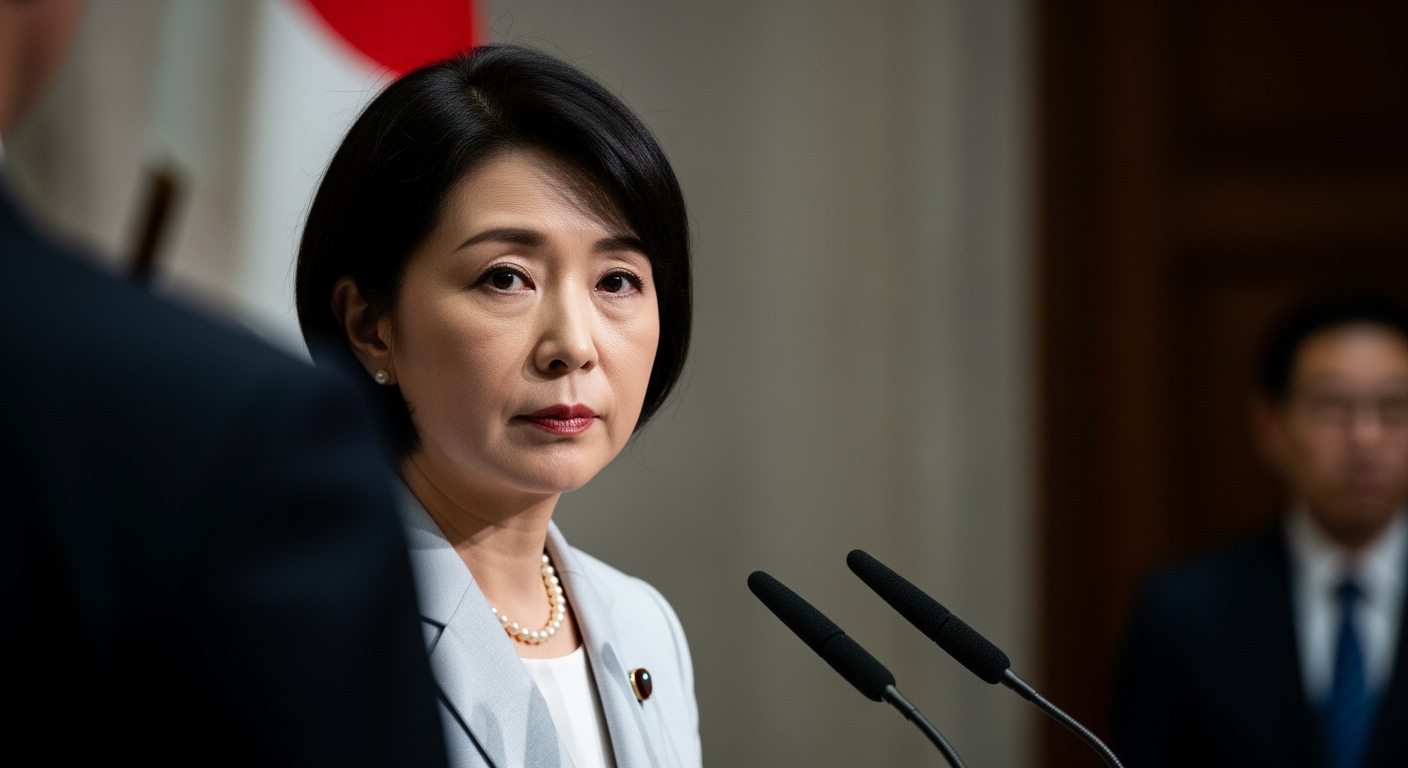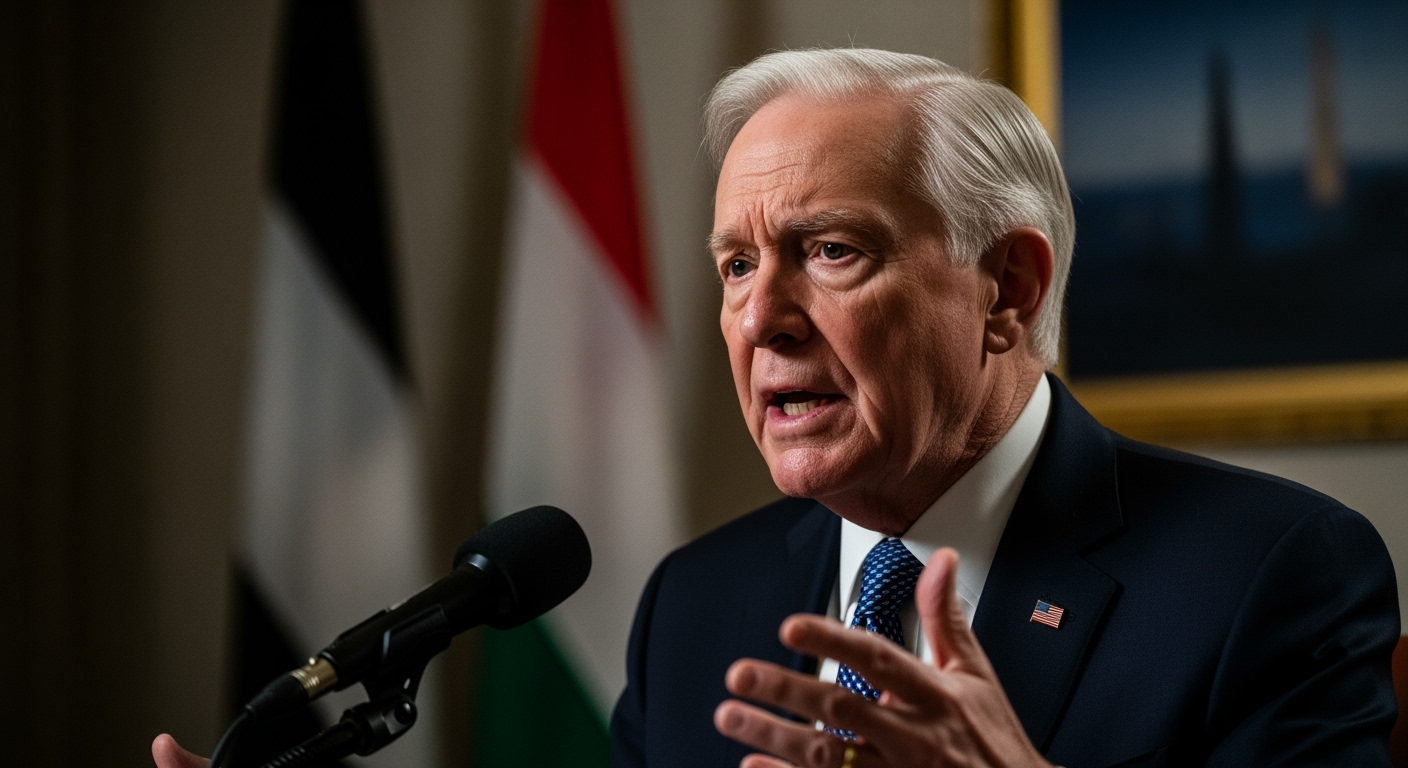Related Articles

Japan Hails Historic Moment as Sanae Takaichi Becomes First Female Prime Minister




Washington D.C. – October 20, 2025 – President Donald Trump stated today that the ceasefire in the Gaza Strip remains "intact," even as reports from the embattled enclave detail dozens of casualties from Israeli strikes since the truce officially began. The President's assertion highlights a growing divergence between diplomatic declarations and the grim reality on the ground, casting a shadow of doubt over the durability of the recently brokered peace agreement.
The ceasefire, a cornerstone of President Trump's ambitious 20-point peace plan for the Middle East, took effect on October 10, 2025, following intense mediation efforts. However, just ten days later, the agreement appears increasingly tenuous amidst persistent violence and accusations of violations from both sides, particularly from Palestinian authorities in Gaza.
Speaking to reporters, President Trump affirmed the ceasefire's continued existence despite "repeated Israeli strikes that have left dozens dead in the enclave." He emphasized Washington's commitment to ensuring "continued calm between Israel and Hamas." Addressing the ongoing hostilities, Trump suggested that the violence might be attributed to "rebels within" Hamas rather than the group's leadership, stating, "We think maybe the leadership isn't involved in that…you know, some rebels within." He added, "But either way, it's going to be handled properly. It's going to be handled toughly, but properly."
However, the reality described by officials in Gaza paints a starkly different picture. The Gaza Government Media Office reported that at least 97 Palestinians have been killed and 230 injured by the Israeli army since the ceasefire's implementation on October 10. The office further documented "80 documented violations" by the "Israeli occupation" during this period, citing a "flagrant breach of international humanitarian law." These figures follow earlier reports, including at least three Palestinian deaths from Israeli attacks on October 16, just days after the ceasefire was meant to halt all hostilities. The mounting casualties underscore the fragility of the agreement and raise serious questions about its enforcement and adherence by all parties.
The current ceasefire stems from a comprehensive 20-point peace plan unveiled by President Trump on September 29, 2025, in a joint press conference with Israeli Prime Minister Benjamin Netanyahu. The plan, negotiated with the consultation of several Arab and Muslim countries, aimed to resolve the ongoing Gaza war and broader Middle Eastern crises. Its initial phase included an immediate cessation of hostilities, the release of all living Israeli hostages held by Hamas in exchange for approximately 250 Palestinian prisoners serving life sentences and about 1,700 detainees from Gaza, and a surge of humanitarian aid into the war-ravaged coastal enclave.
Mediated by the United States, Qatar, Turkey, and Egypt, the agreement saw Hamas return around 20 living hostages to their families, while Israel released hundreds of Palestinian prisoners. The ceasefire officially came into effect on October 10, promising a temporary reprieve from the two years of devastating conflict. White House officials at the time presented the deal as a potential "signature achievement" of Trump's second term, fulfilling a campaign pledge to end a war that had claimed tens of thousands of lives and to initiate the rebuilding of Gaza. U.S. envoys, including Special Envoy Steve Witkoff and adviser Jared Kushner, have since arrived in Israel to discuss the implementation of the deal.
The announcement of the ceasefire was initially met with widespread international praise, with leaders from around the globe expressing optimism for a lasting peace. Indian Prime Minister Narendra Modi, Turkish President Recep Tayyip Erdogan, UK Prime Minister Keir Starmer, Canadian Prime Minister Mark Carney, and Australian Prime Minister Anthony Albanese were among those who welcomed the agreement, crediting President Trump's diplomatic efforts. Hamas, too, expressed appreciation for the efforts of mediators and President Trump, aimed at "ending the war completely and achieving a full withdrawal of the occupation from the Gaza Strip."
Despite the initial accolades, significant skepticism regarding the deal's long-term prospects emerged almost immediately. Experts and officials noted that the agreement, while halting immediate bloodshed, failed to address many of the conflict's underlying causes. Vice President JD Vance, acknowledging the volatile nature of the region, predicted "fits and starts" and "hills and valleys" in the truce, stating, "Hamas is going to fire on Israel. Israel is going to have to respond." Critics pointed out that key elements, such as the demilitarization of Hamas, the specifics of Gaza's future governance, and Israel's full withdrawal, remained largely undefined or lacked concrete enforcement mechanisms. Notably, neither Hamas nor Israel has fully agreed to the terms of Trump's 20-point plan beyond its initial phase, further fueling doubts about a comprehensive resolution.
The backdrop to this diplomatic maneuvering is the severe humanitarian crisis in Gaza, a territory ravaged by years of conflict. Since October 2023, the war has resulted in the deaths of over 67,000 Palestinians and wounded more than 170,000, while the October 7, 2023 attacks claimed 1,139 lives in Israel and saw approximately 200 taken hostage. The scale of destruction and suffering underscores the urgent need for a durable peace, yet significant obstacles remain.
The delivery of crucial humanitarian aid continues to be a contentious issue, with reports of sporadic shipments and disputes over the return of bodies. Hamas indicated difficulties in recovering all deceased hostages from beneath rubble, requiring specialized equipment. Simultaneously, the status of key crossings, such as Rafah, remains uncertain, impacting the movement of people and goods. Beyond these immediate concerns, the deeper, unresolved issues — including the long-term governance of Gaza, the future of a two-state solution, and the disarmament of militant factions — continue to plague any efforts toward lasting stability. With Israel still controlling parts of Gaza, the prospect of a complete withdrawal and a fully self-determined Palestinian future remains distant, suggesting that the "negative peace" of an absence of violence may yet fail to usher in a comprehensive resolution.
President Trump's assertion of an "intact" ceasefire, juxtaposed against a continuous barrage of reports detailing violence and casualties in Gaza, underscores the deep complexities inherent in the Israeli-Palestinian conflict. While the recent diplomatic efforts have managed to secure a temporary halt in some hostilities and facilitated critical exchanges of hostages and prisoners, the peace remains profoundly precarious. The conflicting narratives, coupled with the immediate unraveling of the ceasefire and the absence of clear pathways for long-term resolution, indicate that the Middle East is far from achieving the "historic dawn of a new Middle East" envisioned by some. The coming days and weeks will be crucial in determining whether this fragile truce can evolve into a sustainable peace or succumb to the persistent cycle of violence.